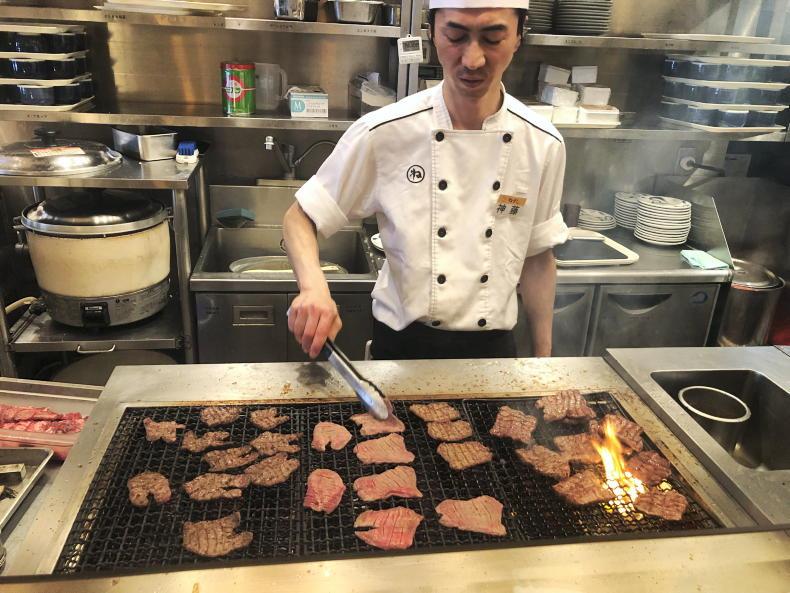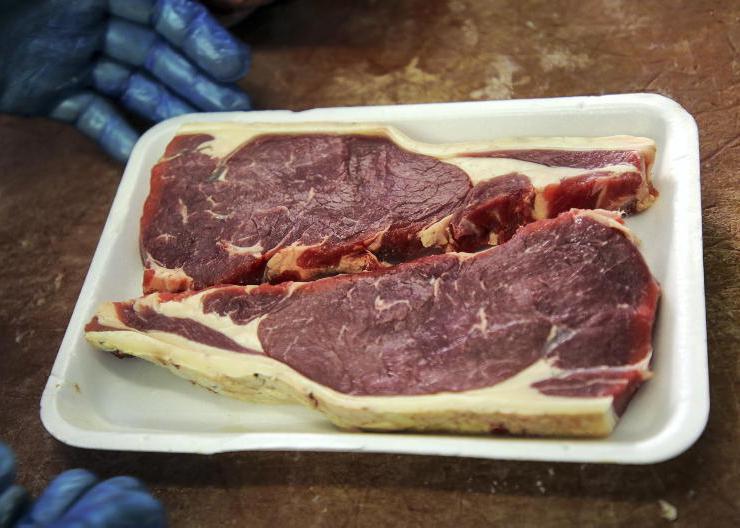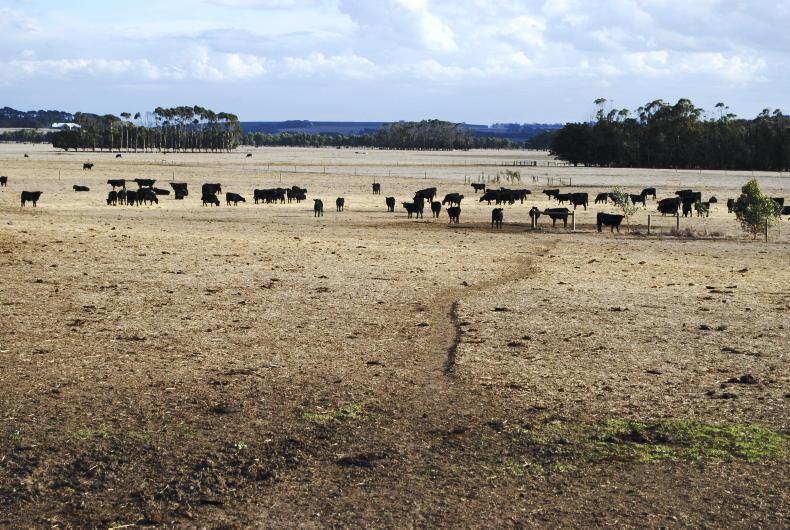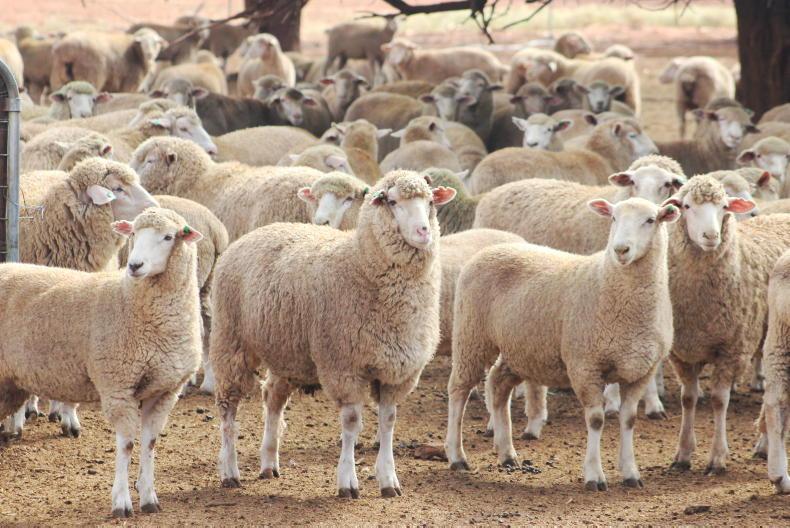Positive vibes from Japan
Joe Moore from the Tokyo Bord Bia office in Japan outlined some positive trends in the Japanese market for Irish beef, which included 6,000t of beef being exported to Japan in 2020 to the value of €20m.
This was up 141% on 2019 levels and up from €3.6m worth of beef exports in 2018.
Japan has been a target for Irish beef exporters for the last number of years following a Department of Agriculture-led trade mission to Japan in 2019.
Japan imported 820,000t of pigmeat in 2020 and 550,000t of beef.
The USA and Australia make up the majority of these beef imports. However, due to drought and high prices, Australian imports have come under pressure in 2020.
The finalising of the Japan-EU economic partnership agreement and the reduction of tariffs on meat products is starting to pay dividends for exporters to increase volumes.
On the negative side, Japan has experienced a third wave of COVID-19 and parts of the country have entered into a state of emergency in early January.
This has meant food service establishments have closed their doors and this is likely to hit demand.
Chinese meat imports will hit 10 million tonnes (mt) in 2020, with beef making up 2.5mt of this.
While other countries are still reeling from COVID outbreaks, China appears to have things under control.
A recent small spike is expected to disrupt Chinese new year celebrations and this could have an impact on imported meat demand in the next few weeks.
Many importers ramped up activity before Christmas in terms of getting ready for the new year, as this period accounts for 16% of food service sales on an annual basis.
Chinese GDP to grow
The Chinese GDP is forecast to grow by 8% in 2020.
This is positive news for meat consumption, as Conor O'Sullivan from the Bord Bia office in Shanghai said: “There is a direct relationship between affluence and meat consumption in China.
"Three-hundred-thousand Chinese families made an online purchase of Irish beef in 2020.
"The more money the Chinese have, the more money they will spend on meat,” he said.
Unfortunately, Ireland is currently locked out of China for beef exports. It was an important growing market for Irish beef.
China imported just over 10,000t of beef in 2018 and had got off to a strong start in 2020, with just under 3,000t exported in the first three months of 2020 prior to an atypical case of BSE being found in a cow in spring 2020.
This meant the suspension of exports to China by Chinese authorities.
Diplomatic efforts are currently under way to see if exports can resume, but, at the moment, China is particularly sensitive to any risk associated with bringing imported products potentially infected with COVID-19.
Bord Bia commissioned an online survey of over 1,000 Chinese consumers to find out the impact COVID-19 had on their purchasing habits.
The trend of 'shielding' or protecting yourself in what you eat came up in the survey, with 66% of Chinese adults eating foods that improve immunity as a COVID-19 response.
Google searches for 'food' and 'immunity' have spiked since COVID-19 set in in March 2020.
Protein is seen as instrumental to strong immunity and this is positive for meat and dairy products being consumed.
A leading doctor, Zhang Wenhong, at the infectious disease department in Shangai’s Huashan hospital has advised parents to “prepare enough milk and eggs every morning for children”.
He also added that “consuming steaks, eggs and milk is one of the best ways to fight coronavirus and fending off disease”.
The survey also highlighted comfort cooking as a new phenomenon in China.
Two out of every three Chinese adults are now purchasing better-quality food.
Fifty-six percent of consumers are now cooking food from scratch since COVID-19 and this has seen the sales of kitchen appliances such as ovens and fryers soar in the last few months.
Sealed foods
There has also been a move to purchase sealed foods, with 54% of Chinese consumers now avoiding purchasing foods on open display in stores.
There has also been a big shift towards purchasing made through live streaming.
This is where a TV show motivates the purchase of a product and millions of euros of products can be sold inside minutes.
Fifty-three percent of Chinese adults shopped more via live streaming as a result of COVID-19.
The number of live streaming purchasers topped 504 million people in 2019.
One beef jerky company teamed up with one of China’s top TV hosts to promote their product and sold 130,000 packets of beef jerky in two minutes online.
Philippines a standout performer
The Philippines market was one of the standout performers in terms of Irish beef exports in 2020, with the value of this market growing 42% to €53m.
Irish beef exports to the Philippines amounted to €14.3m in 2018 and €37.8m in 2019, so it’s a growing market.
The Philippines has also been dealing with huge African swine fever (ASF) problems, with the sow cull estimated to be somewhere between 36% and 60%.
This has caused huge shortages in pigmeat and increased prices.
Ciaran Gallagher from the Bord Bia office in Singapore said: “This week, we see the price of pork belly overtake the price of sirloin steak, which is a first and could shift more consumers to beef in the future."
South Korea and Vietnam are another market which Irish authorities are working on access.
Combined with the Philippines, they have a beef import requirement of 1.57mt annually.
For more detail, see this week’s Irish Farmers Journal print edition.
Positive vibes from Japan
Joe Moore from the Tokyo Bord Bia office in Japan outlined some positive trends in the Japanese market for Irish beef, which included 6,000t of beef being exported to Japan in 2020 to the value of €20m.
This was up 141% on 2019 levels and up from €3.6m worth of beef exports in 2018.
Japan has been a target for Irish beef exporters for the last number of years following a Department of Agriculture-led trade mission to Japan in 2019.
Japan imported 820,000t of pigmeat in 2020 and 550,000t of beef.
The USA and Australia make up the majority of these beef imports. However, due to drought and high prices, Australian imports have come under pressure in 2020.
The finalising of the Japan-EU economic partnership agreement and the reduction of tariffs on meat products is starting to pay dividends for exporters to increase volumes.
On the negative side, Japan has experienced a third wave of COVID-19 and parts of the country have entered into a state of emergency in early January.
This has meant food service establishments have closed their doors and this is likely to hit demand.
Chinese meat imports will hit 10 million tonnes (mt) in 2020, with beef making up 2.5mt of this.
While other countries are still reeling from COVID outbreaks, China appears to have things under control.
A recent small spike is expected to disrupt Chinese new year celebrations and this could have an impact on imported meat demand in the next few weeks.
Many importers ramped up activity before Christmas in terms of getting ready for the new year, as this period accounts for 16% of food service sales on an annual basis.
Chinese GDP to grow
The Chinese GDP is forecast to grow by 8% in 2020.
This is positive news for meat consumption, as Conor O'Sullivan from the Bord Bia office in Shanghai said: “There is a direct relationship between affluence and meat consumption in China.
"Three-hundred-thousand Chinese families made an online purchase of Irish beef in 2020.
"The more money the Chinese have, the more money they will spend on meat,” he said.
Unfortunately, Ireland is currently locked out of China for beef exports. It was an important growing market for Irish beef.
China imported just over 10,000t of beef in 2018 and had got off to a strong start in 2020, with just under 3,000t exported in the first three months of 2020 prior to an atypical case of BSE being found in a cow in spring 2020.
This meant the suspension of exports to China by Chinese authorities.
Diplomatic efforts are currently under way to see if exports can resume, but, at the moment, China is particularly sensitive to any risk associated with bringing imported products potentially infected with COVID-19.
Bord Bia commissioned an online survey of over 1,000 Chinese consumers to find out the impact COVID-19 had on their purchasing habits.
The trend of 'shielding' or protecting yourself in what you eat came up in the survey, with 66% of Chinese adults eating foods that improve immunity as a COVID-19 response.
Google searches for 'food' and 'immunity' have spiked since COVID-19 set in in March 2020.
Protein is seen as instrumental to strong immunity and this is positive for meat and dairy products being consumed.
A leading doctor, Zhang Wenhong, at the infectious disease department in Shangai’s Huashan hospital has advised parents to “prepare enough milk and eggs every morning for children”.
He also added that “consuming steaks, eggs and milk is one of the best ways to fight coronavirus and fending off disease”.
The survey also highlighted comfort cooking as a new phenomenon in China.
Two out of every three Chinese adults are now purchasing better-quality food.
Fifty-six percent of consumers are now cooking food from scratch since COVID-19 and this has seen the sales of kitchen appliances such as ovens and fryers soar in the last few months.
Sealed foods
There has also been a move to purchase sealed foods, with 54% of Chinese consumers now avoiding purchasing foods on open display in stores.
There has also been a big shift towards purchasing made through live streaming.
This is where a TV show motivates the purchase of a product and millions of euros of products can be sold inside minutes.
Fifty-three percent of Chinese adults shopped more via live streaming as a result of COVID-19.
The number of live streaming purchasers topped 504 million people in 2019.
One beef jerky company teamed up with one of China’s top TV hosts to promote their product and sold 130,000 packets of beef jerky in two minutes online.
Philippines a standout performer
The Philippines market was one of the standout performers in terms of Irish beef exports in 2020, with the value of this market growing 42% to €53m.
Irish beef exports to the Philippines amounted to €14.3m in 2018 and €37.8m in 2019, so it’s a growing market.
The Philippines has also been dealing with huge African swine fever (ASF) problems, with the sow cull estimated to be somewhere between 36% and 60%.
This has caused huge shortages in pigmeat and increased prices.
Ciaran Gallagher from the Bord Bia office in Singapore said: “This week, we see the price of pork belly overtake the price of sirloin steak, which is a first and could shift more consumers to beef in the future."
South Korea and Vietnam are another market which Irish authorities are working on access.
Combined with the Philippines, they have a beef import requirement of 1.57mt annually.
For more detail, see this week’s Irish Farmers Journal print edition.









SHARING OPTIONS